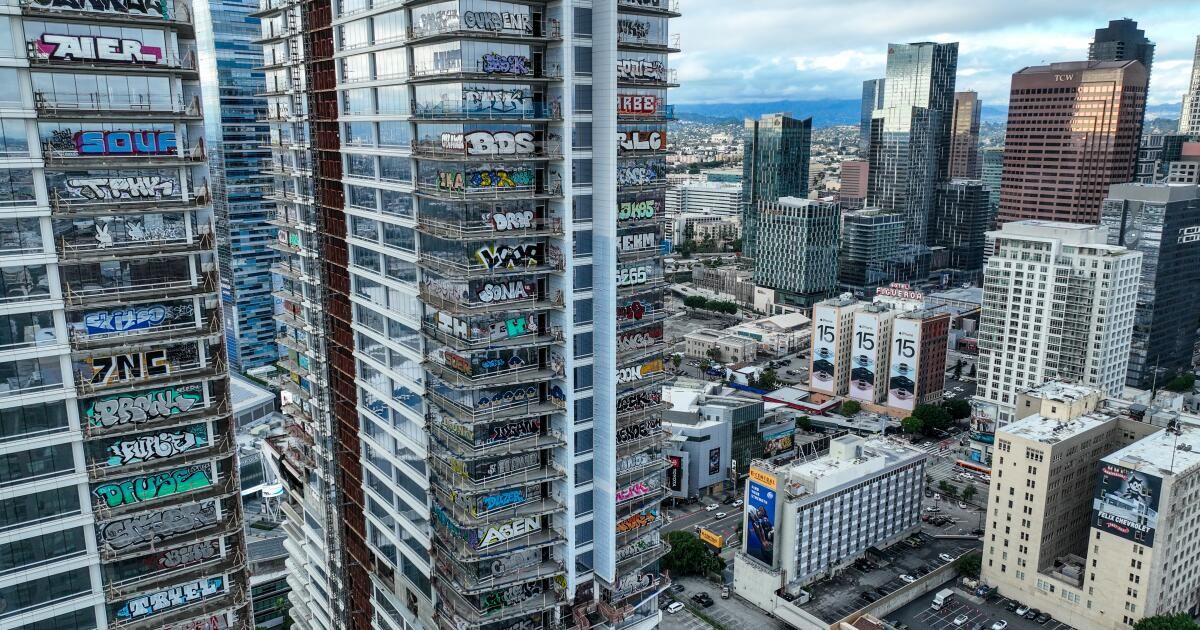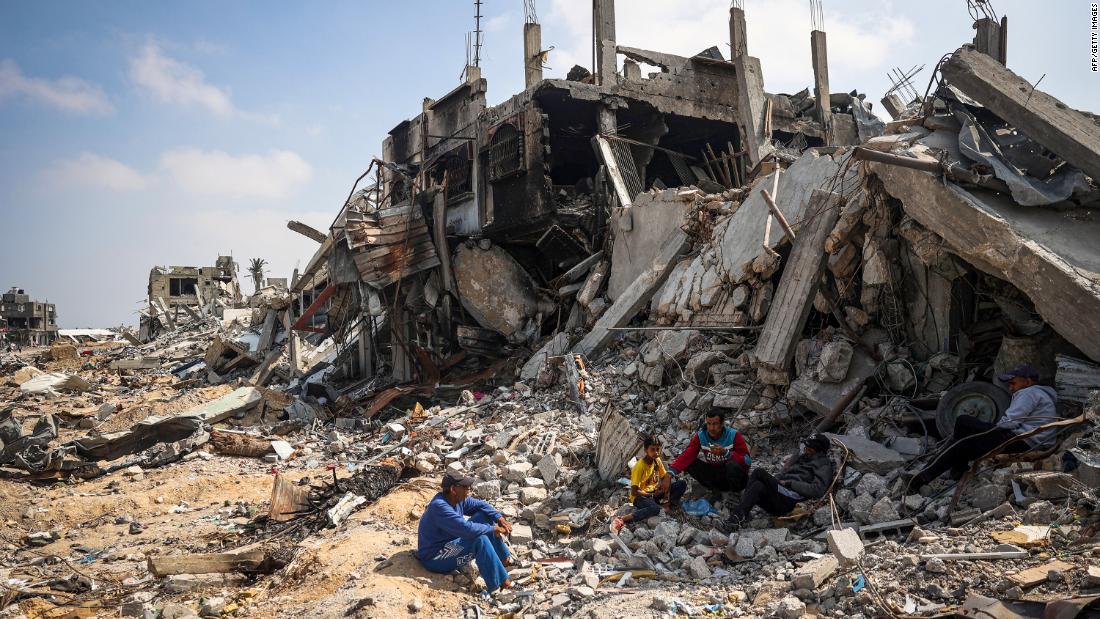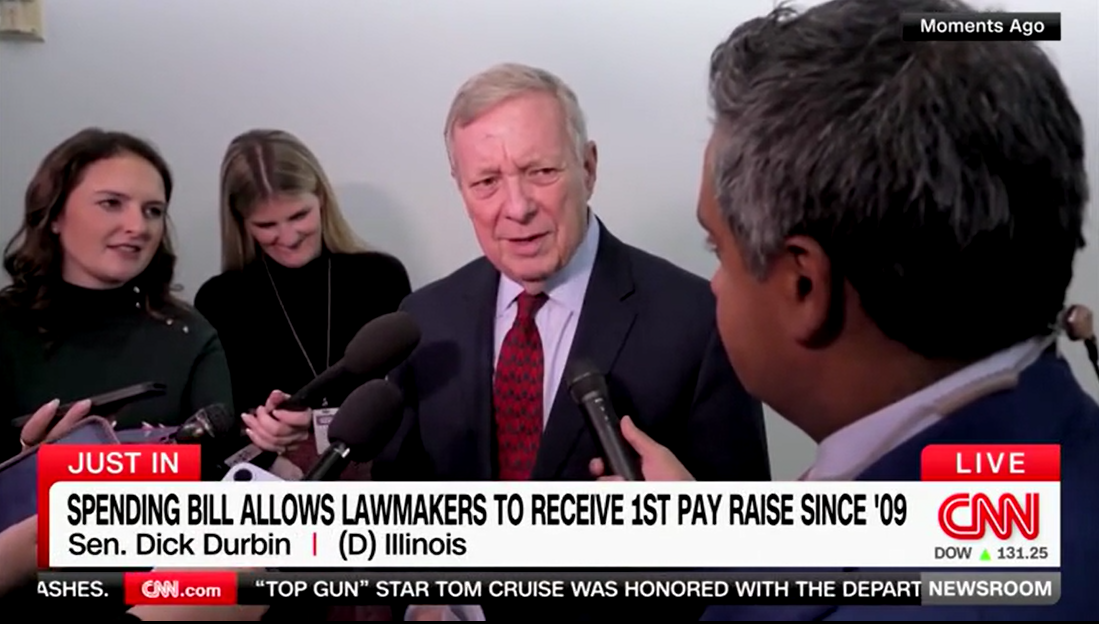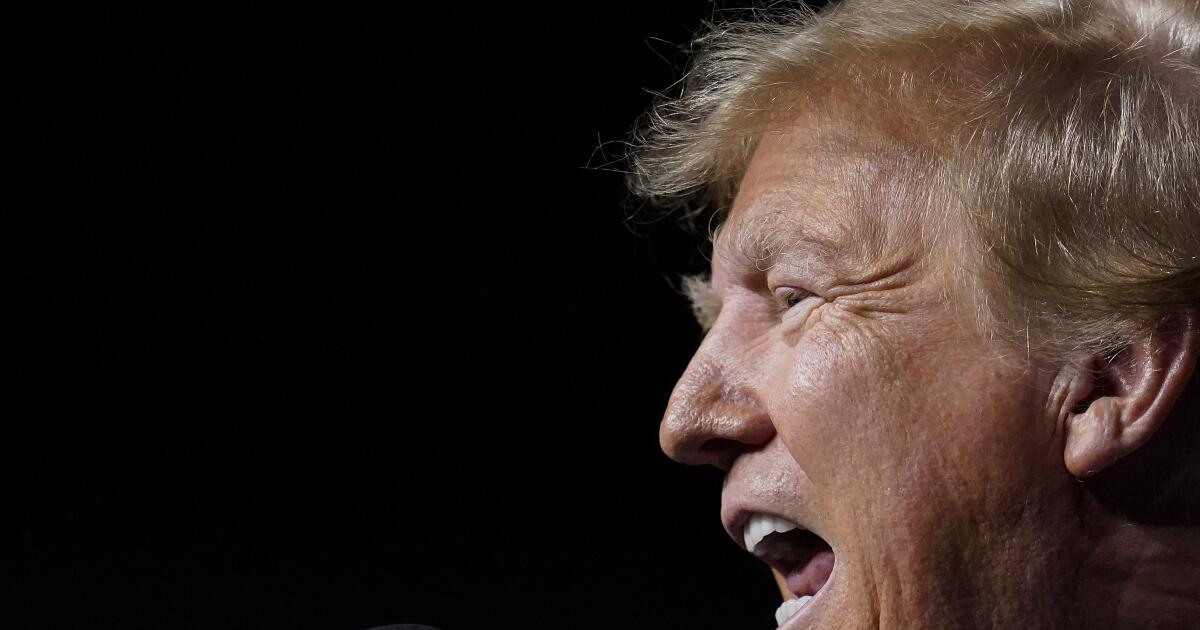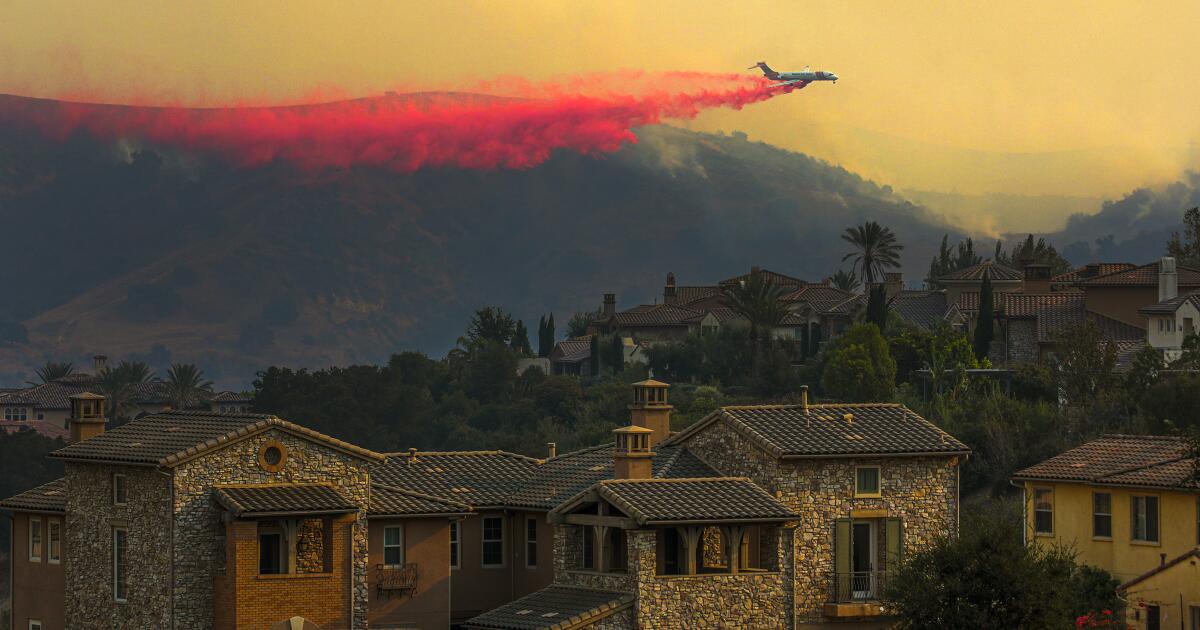From a parking lot on the corner of 12th and Figueroa streets, Michael Lopez carefully controlled his drone across the skyline around LA Live.
A video screen showed the drone's slow ascent. He went up and up, until he framed an almost direct shot from Ansel Adams. The San Gabriel Mountains covered in clouds. Green foothills shining after recent rains. And an abandoned, half-finished skyscraper covered in bright, bubbling graffiti.
Two other towers were hit in a similar manner, and the floor of each building over 20 stories had graffiti in the corners.
The unfinished Oceanwide Plaza in downtown Los Angeles is marked with graffiti after being tagged this week.
(Robert Gauthier / Los Angeles Times)
The audacity and visibility of the graffiti artists' feat (it can be seen from the 10 Freeway and all the way to the Sixth Street Bridge) and the fact that the Grammys are taking place Sunday across the street at Crypto. com Arena have attracted everyone. attention.
It has also become Los Angeles' latest Rorschach test.
For Los Angeles' civic leaders and professional haters, it's the latest proof that the city is falling into a cycle of doom, another nightmare to add to our trash heap of street takeovers, homeless encampments and mass robberies. . The billion-dollar behemoth, called Oceanwide Plaza, was once one of the city's largest real estate projects, but construction stopped five years ago when its Chinese developer ran out of money.
For López, however, the renovated buildings, which were supposed to feature hotels and commercial spaces, as well as condominiums and luxury apartments, are the last thing he loves about his hometown.
“It's beautiful. It's amazing,” he said. He held up his drone shot and waved to a friend who goes by the name Juan G. The two had driven from south Los Angeles to see the scene.
“I know it's getting mixed reviews,” Juan deadpanned, before adding, “I'm sure the people who live in the lofts across the street didn't like being spied on!”
He continued to crane his neck upwards. I rattled off some tags visible from the lower floors: Axion. Ink. Cuts. XN28.
“You'll never see anything like this again,” Juan continued. “The rules are going to change. Security is going to come in here. hard. But having been a part of that? To see this up close? “It is a once-in-a-lifetime moment.”
I'm not a graffiti fan, but I couldn't help but admire what the graffiti artists had achieved. Before us was a monument to the Los Angeles of the moment, which highlighted many issues, consciously or not. Rampant overdevelopment downtown. Civic corruption. Graffiti out of control.
A place with so much potential, but with so much chaos.
If someone tried this at Art Basel, it would sell for millions. If Banksy carried out a project of this magnitude, he would be hailed as a genius. Since this is a group of mostly anonymous people (two have been arrested and released), polite LA is in an uproar. Even Kevin de León, the councilman representing downtown, came out of hiding on Groundhog Day to tell KTLA Channel 5 that Los Angeles should not be an “open canvas.” [for] budding artists.”
It's easy to portray graffiti artists as vandals trying to destroy Los Angeles. But the towers have rotted while Los Angeles bureaucracy has done little to address the situation.
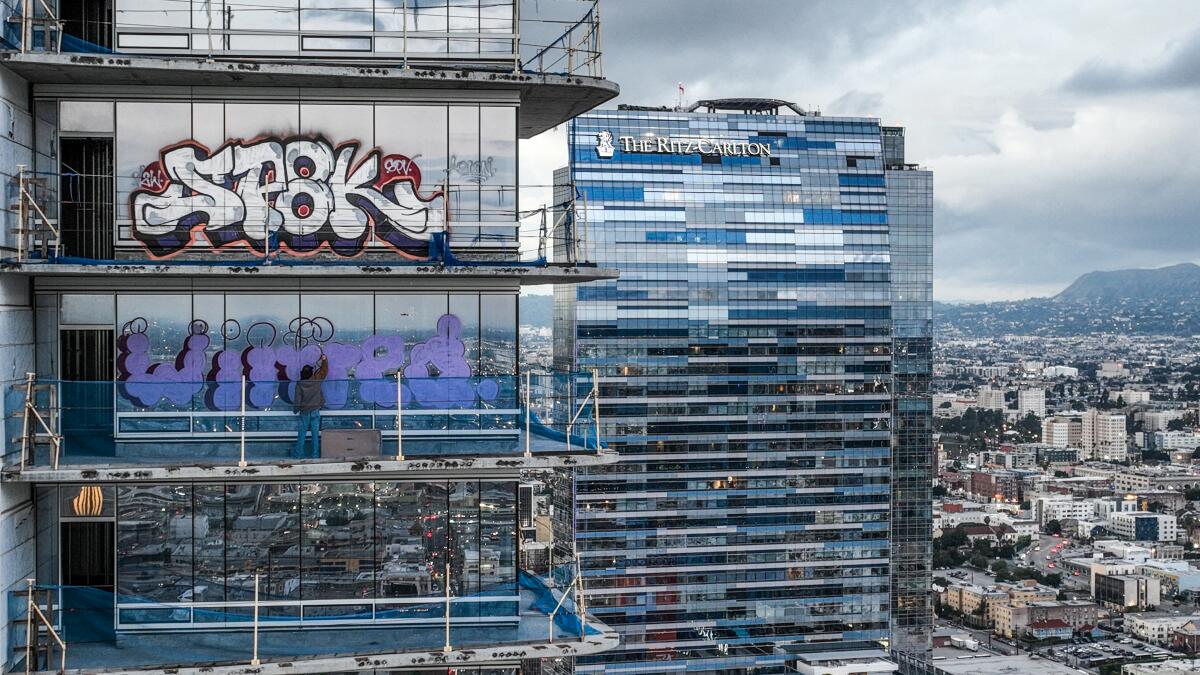
Oceanwide Plaza remained empty and almost forgotten, until a group of graffiti artists spray-painted graffiti on the towers.
(Robert Gauthier / Los Angeles Times)
Instead, graffiti artists were in charge of transforming something ugly into something much more vibrant. Isn't this Los Angeles at its finest?
The fact that they used the medium of street art makes their work that much more Los Angeles.
The city has been plagued by graffiti for decades. I used to estimate driving time on the 10 by following the exit ramps on the freeway signs. Now I can do it based on the giant label and the huge warehouse I just passed by.
Graffiti, at its worst, does not beautify neighborhoods. But what happened at Oceanwide Plaza was no spontaneous doodle. The ingenuity of methodically bombarding every corner with dozens of names exemplifies the teamwork to which we should all aspire. The failure here came from a company that doesn't have the money to pay security guards and a city government that should never have approved the sky company in the first place.
Additionally, graffiti has been a part of the Southern California working class for decades. Even I, a nerdy teenager, scribbled “Pharaoh” on windows and wooden desks in eighth grade until security guards at my Anaheim school took away my engraving tool. There was something liberating, even validating, in seeing an art form long demonized as vandalism, at the same time that large corporations have appropriated it, take control of such a visible part of the city center.
“All of this doesn't just belong to developers,” Lopez said. “It belongs to all of us.”
Above the parking lot where he and Juan stood stood a two-story mural depicting Clippers superstar Kawhi Leonard in street art style. I was surrounded by trivia like “Never Never Give Up” and “Follow Your Dreams” in doodles that tried to imitate graffiti but were as cool as mom jeans.
“They call this art,” Juan said before pointing toward the skyscrapers, “and not that?”
I left them and walked towards the front of the Crypto.com Arena. There, I found Zack Woodard taking photos of the labeled skyscrapers before asking a friend to capture him with the buildings as a backdrop. High above him, a tattered and pockmarked white banner reading “Oceanwide Plaza” hung from an unfinished structure.
“When I got here in Uber on Wednesday, it was only half done,” said Woodard, who is in town for the Grammys as program director of the GRAMMY Museum in Mississippi. “It's really impressive to see how quickly they finished it.”
Another friend, Rachel Patterson, continued to look up. “I couldn't imagine getting there!”
“People say it makes the skyline look bad,” Woodard said. “But it's not going to be there forever. It's well done. Plus, street art is part of the history of Los Angeles.”
He asked me what the buildings were supposed to be. When I said residential and retail, Woodard scoffed: “Like everything else in Los Angeles.”
As I drove away, I passed the parking lot where I had met Lopez and Juan. More people surrounded them, all looking up, all with big smiles on their faces.
I smiled too. There are many things wrong with Los Angeles, but the labeled ruins that bring happiness to locals and tourists alike are the least of them.

